Review: 2012 Kia Rio 5-Door

In his novel Excession, sci-fi writer Iain M. Banks introduced the concept of the “Outside Context Problem”. It’s described like so:
The usual example given to illustrate an Outside Context Problem was imagining you were a tribe on a largish, fertile island; you’d tamed the land, invented the wheel or writing or whatever… you were in a position of near-absolute power and control which your hallowed ancestors could hardly have dreamed of and the whole situation was just running along nicely like a canoe on wet grass… when suddenly this bristling lump of iron appears sailless and trailing steam in the bay and these guys carrying long funny-looking sticks come ashore and announce you’ve just been discovered, you’re all subjects of the Emperor now, he’s keen on presents called tax and these bright-eyed holy men would like a word with your priests.
The current players in the subcompact game have defined their roles pretty well. Yaris: cheap and crappy. Versa: metal for money. Fit: Magic Seat and Honda markup. Fiesta: sporty, but pricey and slow. Sonic: Second-tier Korean car made by UAW labor. Putting aside the Accent (which we’ll get to in a bit), those were your choices. This situation has worked out pretty well for all involved, because with the exception of Nissan nobody was looking for volume anyway and the rest of it amounted to eco-friendly window dressing, lip service to the media loudmouths who talk about small cars and then catch a limo ride home to Park Avenue. It’s a happy little society.
Unfortunately for everyone involved, however, there’s an Outside Context Problem arriving at Kia showrooms. The 2012 Rio is good. It is cheap. Compared to its competitors, it’s even fast. If you’re swimming in this segment, you’re about to see blood in the water.
TTAC readers know that Kia is on a bit of a roll lately. During the media presentation which accompanied our Rio test drive, the company’s PR people hammered all the relevant numbers directly into our brains. ALG residuals for their products have soared from the outhouse (37% for the Amanti) to the penthouse (55% or above for many current models). Their median buyer age is below the industry average, while their median education level is up. Some of that change is due to savvy marketing, but a lot of the gains have come the old-fashioned way of simply building a better mousetrap.
The 2012 Rio is handsome enough to these eyes, sporting the new Kia brand-identity face in front and bearing a considerable resemblance to the old SEAT Leon in the back. On the road, it looks more European than Korean, and perhaps more importantly it takes its proportional cues from the next class up. There’s no Fiesta/Fit/Yaris tall-car/toy-car vibe here. Kia was unashamed about the fact that a few interior dimensions have been reduced from the outgoing model, particularly for the rear passengers. Unlike the competition, Kia has two entrants in this segment — Rio and Soul — and therefore it doesn’t need to provide a high roof. If you want to wear a homburg while you drive, or if you want to carry a double bass, buy a Soul.
Behold, the premium sixteen-thousand-dollar car. While the interior shot comes from the completely-loaded $19,900 SX model, the fundamentals are there from $13,600 and up. The steering wheel would be an upgrade to any number of vehicles including the Corvette ZR-1, while the interior materials are rather disturbingly reminiscent of the Infiniti G25. I had to grab my test car in a bit of a hurry during the event and spent two hours behind the wheel thinking “This is a really solid interior for nineteen grand.” It wasn’t until I reached the end of the drive and looked at the exterior badging that I realized I’d been driving the $16,000 mid-level model. This is the class-leading interior without a doubt, and by some clear distance. Visibility is excellent all-around, helped not a bit by the silly triangle windows in the A-pillar, and the gauges are easy to read. The metal-finish center console offers some nifty “aircraft toggles” for the defroster, A/C compressor, and a few other things. They are satisfying to operate, even if the driver will never be fooled into believing that he is flying an aircraft. The available feature set is extremely complete, including the expected (Bluetooth), the useful (heated seats) and the positively premium (keyless start).
My test car had the “Powered by Microsoft” UVO system for iPod integration. It works about the same way that SYNC does, and is likely about the same as SYNC under the skin. UVO had no issue passing my personal voice recognition test (“Play… Artist Vladimir Ashkenazy”) and it indexed 118GB of music from my iPod Classic in about ten minutes. Unfortunately, that’s where the good news stops; the audio quality was severely disappointing, so much so that I stopped the car so I could roam around the cabin and make sure all the speakers were working. If there is anything on the Rio which connects it to the Hyundai and Kia small cars of a decade ago, it’s this stereo. Not only is it low-fi, it’s underpowered. A few other autojournos told me they’d turned it all the way to “Max” volume just to hear the music over the road noise.
Which leads us to the Rio’s primary over-the-road fault. The mechanical noises are very well-damped, so much so that it’s tough to tell if the engine is running at stoplights, but once underway it’s simply loud in the cabin. The top-end SX model, with its 17″ wheels and sport-tuned suspension, is likely even worse. On the positive side, the Rio is the only car in its class to have power folding mirrors, as seen in the photo above. All I can say is that the young woman driving that white Rio kept her mirrors folded for the entire trip. No, wait. I can also say that she was stunning-looking.
The rest of the Rio’s dynamic package is very satistfying. The engine is surprisingly strong, twisting 138 horsepower out of 1.6 liters thanks to direct injection. According to Kia, the manual-transmission “take rate” of the Rio is slightly under five percent, so they’ve made the autobox mandatory for all but the cheapest model. This is a genuine shame, because the conventional torque-converter six-speed slusher really does blunt the 1.6’s verve. The Rio is very far from being a “hot hatch” but in my hands it romped up to 105mph with no difficulty whatsoever and there appeared to be plenty more left.
Handling with the non-sport suspension was on the pleasant side of perfectly adequate. The Rio feels nimble, although it doesn’t have the Fiesta’s reflexes, and the steering feel is well-damped and perfectly communicative. Kia’s press launch was held north of Austin, TX, which significantly limited the opportunities to test handling and braking. Most of the gentle curves in the Texas two-lanes were easily swallowed at eighty-five or ninety miles per hour, and the descents were rare enough that the brakes never got taxed. All Rio models do have four-wheel discs, which will surprise and delight Honda conquests.
So, let’s review. Looks nice on the outside. Looks nice on the inside. Top-notch interior, comprehensive feature set. Reasonably spacious but not tall-roofed or supermini-proportioned. A choice of six-speed transmissions and 138 horsepower. One thing I didn’t mention: the Rio hits the mandatory 40mpg mark with both transmissions, and there will be an extra 1mpg in the city from an optional stop-start system coming in 2012 proper. None of this sounds terribly revolutionary.
Except. This is a subcompact. It’s a subcompact that sells for less money than the competition. It’s a real car for less than the price of a high-roofed runabout. The base car is perhaps the best value in the market, while the loaded model offers an ES350’s worth of equipment for half the price. It doesn’t punish its owner for saving money and it doesn’t scandalize the neighbors by announcing your poverty. Compared to its Accent sibling, it has all of that car’s virtues plus a two-fisted helping of style and upscale appeal.
With this new model, the Rio has jumped from being off-the-radar credit-criminal transportation to the class-leading entry. It’s become my default answer to “what new car should I buy?” If you have less than twenty grand, expect to hear a Rio recommendation. (If you have more than twenty grand, I suggest the Veyron Sang Noir.) The only thing that stops me from being a complete Rio evangelist is the fact that the company has explicitly not stated any plans to build the car in the United States. Perhaps the weak dollar will eventually change that. In the meantime, the Rio is the best small car money can buy for almost nearly everyone. Drivers who need slightly more space and/or a little extra utility will have to look elsewhere, but as we will see later on in this week, they’ll be looking in the same dealership.

More by Jack Baruth
Latest Car Reviews
Read moreLatest Product Reviews
Read moreRecent Comments
- FreedMike Miami is a trip - it's probably the closest thing we have to Dubai in this country. If you are into Lambos and the like, definitely go - you'll see a show every night. These condos fit right in with the luxury-brand culture - I'm surprised there isn't a Louis Vuitton or Gucci building. I was in Miami Beach in January with my fiancee, and we shared a lovely lunch that consisted of three street tacos each, chips and salsa, and two sodas. Tab: $70.00, with tip. Great town, assuming you can afford to live there.
- Kjhkjlhkjhkljh kljhjkhjklhkjh Pay money to be inundated in Adverts for a car that breaks when you sneeze? no
- Laflamcs My wife got a new 500 Turbo in 2015. Black exterior with an incredible red leather interior and a stick! The glass sunroof was epic and it was just about the whole roof that seemed to roll back. Anyway, that little bugger was an absolute blast to drive. Loved being run hard and shifted fast. Despite its small exterior dimensions, one could pile a lot into it. She remember stocking up at COSTCO one time when a passerby in the parking lot looked at her full cart and asked "Will it all fit?" It did. We had wonderful times with that car and many travels. It was reliable in the years we owned it and had TONS of character lacking in most "sporty" car. Loved the Italian handling, steering, and shift action. We had to trade it in after our daughter came along in 2018 (too small for 3 vacationers). She traded it in for a Jeep Renegade Latitude 6 speed, in which we can still feel a bit of that Italian heritage in the aforementioned driving qualities. IIRC, the engine in this Abarth is the same as in our Renegade. We still talk about that little 500..........
- Rochester If I could actually afford an Aston Martin, I would absolutely consider living in an Aston themed condo.
- Redapple2 I ve slept on it. I would take one on a 3 yr lease for $199/mo- ($1000 down total). Evil gm Vampire gave me this deal in 2012.





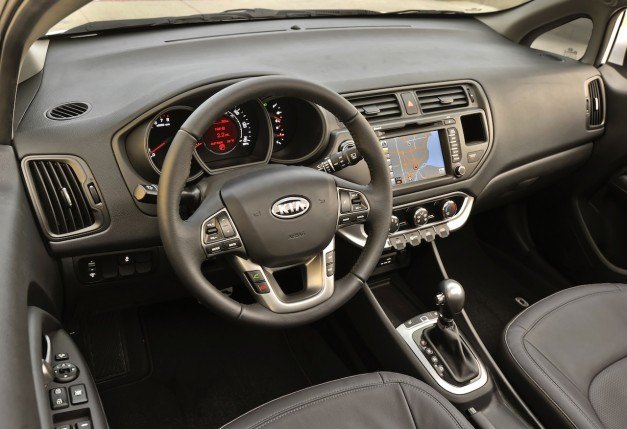

















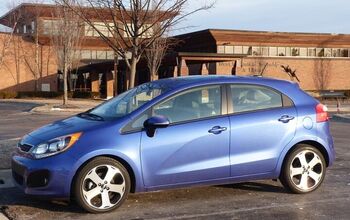
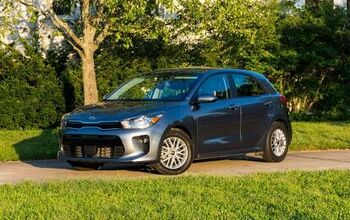
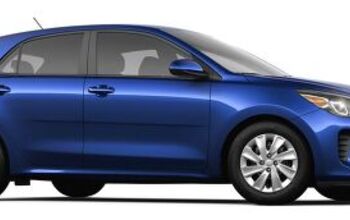

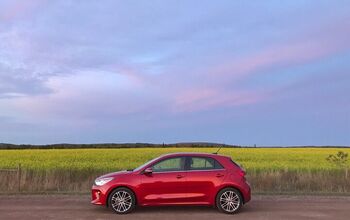










Comments
Join the conversation
"...it doesn’t scandalize the neighbors by announcing your poverty." that's fantastic.
Just test drove one of these last night, back to back with a base optima, and a soul + (all autos). Very impressed by the Rio, more so than the accent. Most of the optima's appeal is on the outside (and the sticker), and the soul is roomy but has a surprisingly bumpier ride compared to the rio or the optima. weird.